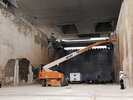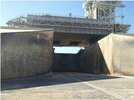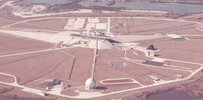Why? It will have cooled a bunch due to expansion and deluge water, the ship is metal, F9 flys through its own farts on every landing, and SH will too. The aero covers are designed for reverse flow along with engine protection.That’s an interesting definition of harmless you’re using
That's assuming there is even any significant backwash, it may pull the surrounding air downward like the Saturn V.





